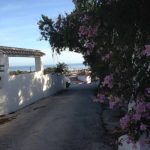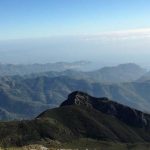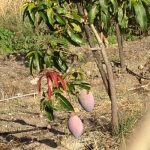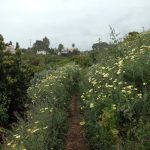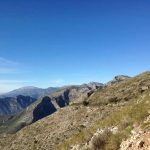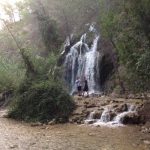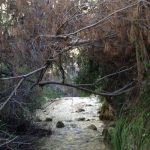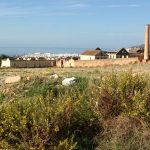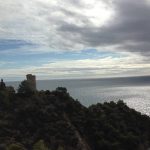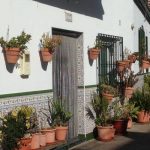Just a few kilometers east of the city of Málaga in the autonomous region of Andalucía you will find an area called La Axarquía. This area consists of three small interlinked mountain ranges. The highest peak is Maroma which reaches over 2000 meters and there are several other peaks in the range between 1500 and 2000 meters. These mountain ranges form a shield protecting the villages at the coast from the cold northern winds that blows in the Spanish central plateau in the winter. This makes the climate in La Axarquía uniquely mild and dry and in some valleys the climate is sub-tropic and makes it possible to grow exotic fruits like mango and banana in a large scale. Otherwise avocado is the dominating fruit that is grown in almost every valley in the area.
The three mountain ranges Alhama, Tejeda, and Almijara presents a very dramatic scenery with jagged rocks and steep mountain sides but it also has a great wildlife where you frequently can see birds of prey in the sky and if you are lucky, and move very quietly, you can get a glimpse of the rare and very shy mountain goat before it spots you and vanishes without a sound.
Nerja is probably the most well-known village on the coast of La Axarquía famous for its nice climate all year around and for its impressive stalagmite caves. But also the ancient village of Frigiliana half way up in the mountain from Nerja with its white houses and its magnificent valley view is well known, as is Torrox five kilometers along the coast from Nerja on the road to Málaga.
It is easy to put together your own walking trails in this area and if you don’t feel like making a strenuous all-day hike high up in the mountains you could instead walk in the valleys, like the Frigiliana valley, where you walk through a forest of avocado trees and olive trees with some odd mangoes and bananas growing in places where the conditions for that kind of fruit to grow are met.
In some parts you will be better off walking in or by the streams that flows through the valley. If you instead follow the tarmac roads will make you meander back and forth between the valley edges and it will take forever to get to Frigiliana. Walking in the streams on the other hand drastically shortens the distance to only a fraction of the road distance.
It is also possible inside a day to make a varied walk from Nerja, through the Frigiliana valley, over some ridges to Torrox , and on to the beach at Torrox Costa, and if you don’t mind walking alongside the busy road by the coast, all the way back to Nerja again.







